My great grandparents, Edward Ernest Hill and Mary Gertrude Hill (nee Day) were early Bridgetown pioneers. The family business was called E. Day & Co and they ran a series of different businesses during their time they lived in Bridgetown including E. Day & Co Universal Providers (corner of Henry Street and South Western Highway, formerly Hampton Street), saw mill, an orchard and sheep stud at Sunnyhurst farm. They built the Sunnyhurst homestead and were members of numerous local committees and organizations.
My mother, Millicent Mary Halma (nee Hurst) called Janne, grew up on the property in a cottage near Sunnyhurst Homstead until the age of 9.
The following is a collection of information I’ve learnt about our family history. It includes information about Bridgetown and the Sunnyhurst Homestead sourced for a range of resources combined with information provided by my mother Millicent Mary Hurst.
This page is updated as I find new information and was last updated 7 May, 2018.
About Bridgetown
I’m starting with some Bridgetown history as it provides context to what life was like for the Hill family in the early days in the region.
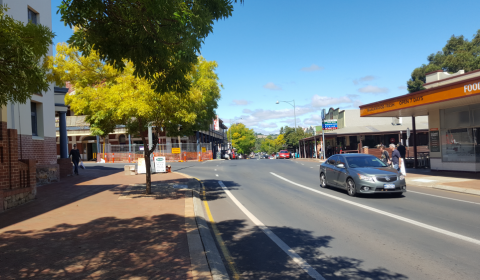

Bridgetown is a town in the South West of Western Australia, located approximately 270 km from Perth. Named as it is at a bridge and the “Bridgetown” was the first ship to put in at Bunbury for the wool from the districts.
With a population around 4,000 in 2014, it is one of the oldest inland town in the south west. In 2000 Bridgetown became the eighth town in Western Australia to be granted Historic Town Status by the National Trust.
Bridgetown was once the only town between Australind and Albany; and was an important center for supplies and food produce for the State.
Convict transport ceased in 1868 which contributed to a slow down in the economy leading to slow population growth in 1870’s and 1880’s in Bridgetown and other parts of Western Australia.
The late 1880’s and early 1890’s saw a population upsurge in the State with the discovery of gold. Western Australia’s population was 35,000 in 1885 – had trebled to 101,000 by 1895 and was 239,000 by 1904. Most of the new arrivals came from the Eastern States and by 1901 less than a third of the population had been born in Western Australia.
Many of those who became disillusioned by their lack of success in the goldfields turned to other work and opportunities in other regions of the State.
The Bridgetown region developed as an important farming area, especially for fruit growing, and timber region.
Key Events
Summary of some key events from Bridgetown’s History:
- It was gazetted as a town on 9th June, 1868 and officially re-named Bridgetown.
- Railway came to Bridgetown in 7th October, 1898.
- Roads were gravel or dirt roads until sometime in the early 1900’s
- First cars arrived in 1905
- Royal car on the Royal train carrying the Prince of Wales derailed ten miles from Bridgetown during the Royal tour of Australia on July 6, 1920.
- Mechanics Institute built in 1877 as community meeting place located on the corner of Hampton and Steere. Expanded in 1908; it was used for community meetings, social events and eventually included a library.
- The site of the current Shire buildings is located on the original Mechanics Institute site. My great-grandfather Ern Hill was kicked off the Bridgetown Road Board because he opposed building it on the original Mechanics Institute site
- Gas street lighting was used from 1895 from 1920s.
- Power station building was built in 1924. and power was officially turned on 7th May, 1924. It initially ran from 4 PM to midnight and as demand increased the hours became longer.
- In 1924 It had 5 banks, 4 hotels, 2 coffee places. 4 drapers 1 tailer, 1 milliner, 1 hairdresser, 2 saddlemakers, 1 blacksmith, 1 cordial manufacturer, 1 shoemaker, 5 general stores, 1 pharmacy, 2 motor garages, 1 plumber, 2 butchers, 1 newspaper, 2 newsagents, 2 cafes, 1 watchmaker, 2 general merchants, 1 taxi and 1 baker from Gaines, C 1970, Bridgetown : one hundred years of history, The author, [Perth]
- In 1920 there was only 35 telephones in the District which had grown to 140 by 1926.
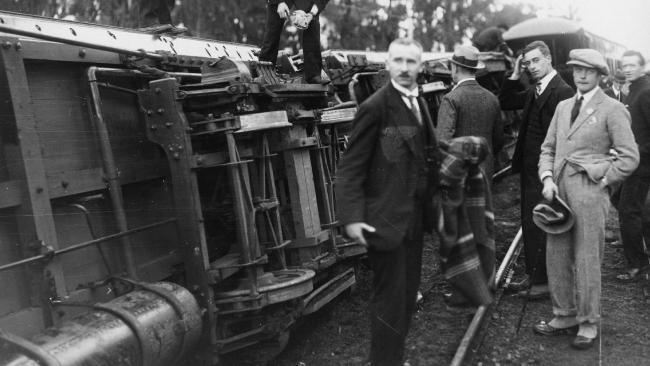
Local Government
Local Governments were established in 1871 in Western Australia and many were initially referred to as Road boards since their primary function was to create and maintain road networks in their local area.
The Hill Family was involved in the Road board in the early 1900’s and here is a summary of the Road Board name changes in the region:
- Bunbury Road Board: 1874 – 1887
- Nelson Road Board: 1887 – 1917
- Bridgetown Road Board: 1917 – 1961
- Shire of Bridgetown: 1961 merged to become Shire of Bridgetown-Greenbushes in 1970.
Introduction to Hill Family History
I’m starting with the following article ‘Farewell Old Pioneers’ article published 4 July, 1947 in The Blackwood Times as it provides a good overview of the family’s history in the region. I’ve added photos to help readers visualize the history better.
Farewell Old Pioneers
Fifty years ago, to be exact, in 1897, a young man arrived in Bridgetown and this week he and his good wife and daughter and ‘ son-in-law (Mr. and Mrs. C. Hurst) leave the scenes of their, life’s labour remembered by their friends “For what they have done” during their half a century’s residence in Bridgetown district.
The young man was Mr. E. E. Hill and his wife was formerly a Miss Day who, when on that day in the late nineties she arrived by coach from Donnybrook and was met at Bridgetown by Mr. Hill asked: “Where is Bridgetown?” She received the answer, “the bridge is down there (pointing south) but Bridgetown is coming.”
Source:
- 229177PD: Bridge over the Blackwood River, Bridgetown, 1912 State Library of Western Australia
- Gore, Stuart 022963PD Steam Locomotive, Bridgetown, 1930s State Library of Western Australia.
They have seen the town come and grow and had some hand in its development — proved themselves good neighbours, ideal citizens — and many were the good deeds credited them at a farewell gathering tendered them by the people of the Matta Mattup at the lesser town hall, Bridgetown, on Tuesday of last week. Acting chairman of the road board (Mr. H. 0. Moore) presided, and there were present many stalwarts of those early days — George Bartlett, “Pop” Henderson, A. W. James, the Mays and other well-known families, also representatives of organisations like the Bridgetown Fruitgrowers’ Association, the tennis and the bowling clubs.
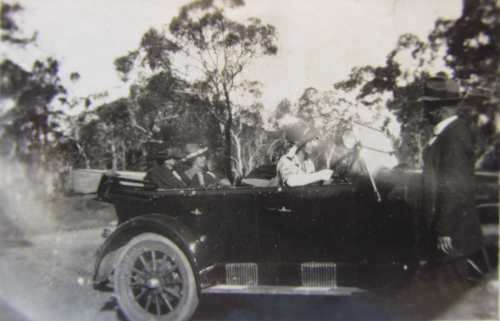
To appreciate Mr. Hill’s long association with the district is to visualise those early days before the railway had arrived, when Hampton-street was only a bridle path in the bush ; a cow yard where now stands J. F. Smith’s commodious stores and next to it Daw’s Hotel, a structure of wood, brick and stone, since replaced by the commodious Bridgetown Hotel.
A man of progressive- ideas and courageous convictions, young Mr. Hill erected a building near the Terminus Hotel on a piece of land he got from Mr. J. Smith at a ground rent of six shillings per week. By this time the railway construction had reached as far as Hester. Driving out there one day Mr. Hill was pleasantly surprised to find that the majority of the men working on the construction were fellows he had known on the goldfields. They insisted upon him having tea, promising to see him safely along the track for home,- and before he left had induced him to start a store in Bridgetown, undertaking to “stick by him.”
“Stick by me, they did,” said Mr. Hill on Friday last during a conversation with the writer.
Mr. Hill opened a store in his new building near the Terminus, remained there for two years, and then bought a piece of land (which he cleared) and erected a shop on the spot on which today stands Mr. Wilson’s Bon Marche.
Source:
- 008250PD: Bridgetown, 1923 State Library of Western Australia. E. Day & Co derived from a screenshot taken when zoomed in on the original photo.
He ran a sawmill on the Balbarrup road and also one at the rifle range, supplying paving blocks for Barrack and Hay streets, Perth, at 45/ a load on rails. Scantlings in those days were 30/ f per load and seasoned flooring £3 per load. The working hours per day were 8 hours 35 minutes, highest wages 10/ a day, other rates 7/6.
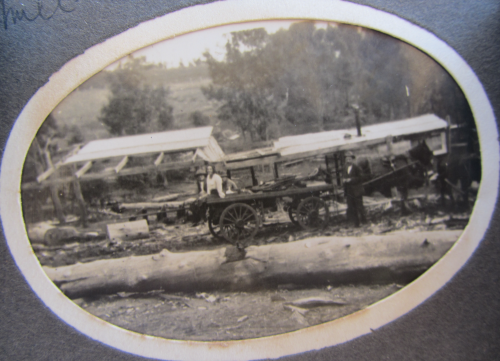
After about 11 years he sold the business and purchased the Sunnyhurst property which he developed into a highly productive farm overlooking some of the finest scenery of the beautiful Matta Mattup country.
“No Better Neighbours”

Presenting the toast of their guests — Mr. Harry Moore said better neighbours he never knew. He mentioned , that during World War I, Sunnyhurst was the headquarters for the local Red Cross.
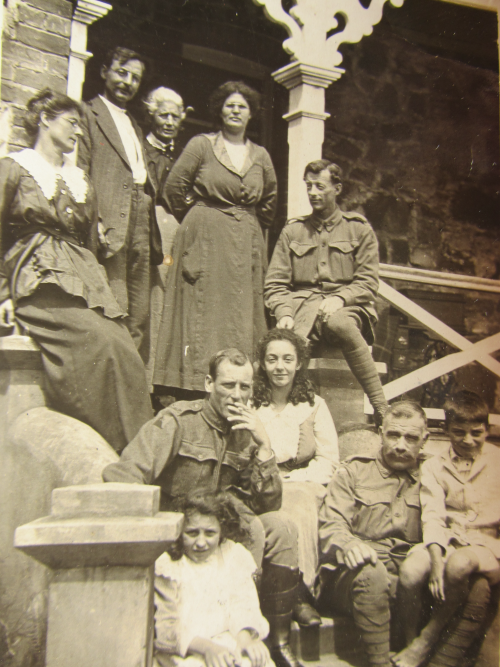
Front Row: Unknown, Clarice Hill, Sylvia Hill (front), Kenneth Hill sitting on lap of Wally Hill?
He referred to Mr. Hill’s achievement in eradicating an outbreak of Codling Moth in one year and his outstanding services in regard to the number of cattle he had saved for various settlers. He thanked the family for all the help that its folk had given Bridgetown, especially in the early days.
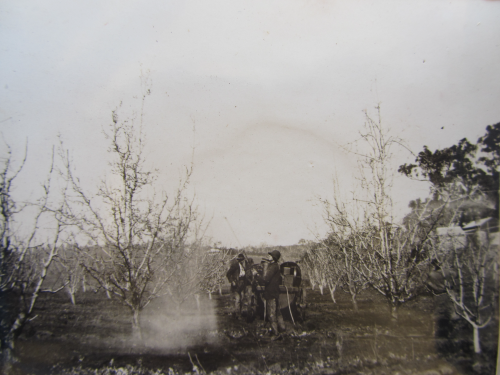
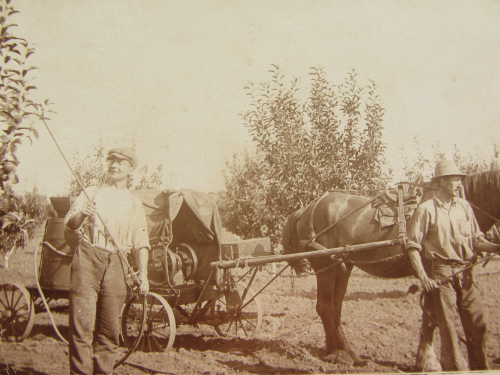
Mr. J. P. Henderson quoted the immortal Bard of Avon that “each man in his time plays many parts, each, having his entry and exit,” and said that unfortunately they were gathered there that evening to see Mr. and Mrs. Hill and family make their exit’ from the scene of their activities, which “were our activities.”
To appreciate how good a cow doctor Mr. Hill was one must be a cow cocky, said Mr. Henderson. What Mr. Hill had done for the district for stock was more than they could express their thanks for. The district had never had the. service of a “vet.” and what it would have done without Mr. Hill, he did not know, for Mr. Hill had carried out work that many a vet. would have hesitated doing, and he had done it successfully. They owed him a debt of gratitude.
Referring to Mr. Hill’s ability as a diviner, he said no one would dream of looking now for gold in the district, for had any been there Mr. Hill would have found it long ago from the many bores he put down, but said Mr. Henderson, he gave us something better than gold; he gave many of us water.
Mr. Henderson then went on to say that Mr. Hill was the first man to introduce mechanised farming to Bridgetown and had brought to the district its first tractor.
“It Had, To Be Good”
In the fruit industry he had always been a “good opposition” and opposition was good for any community. Going back to the year 1914 Mr. Henderson said that any proposition brought before fruitgrowers by gentlemen from Perth had to be good to get by Mr. Hill for if there were any weaknesses in it Mr. Hill would find them.
The Granny Smith apple made the Bridgetown fruit industry, said Mr. Henderson, and it was, Mr. Hill who introduced the Granny Smith to the Bridgetown district. He had been a member of the road board and also a manager of the Westralian Farmers.

They had a little school at Kangaroo Gully, which during the years had had a hard battle, ‘sometime open, sometimes closed, but year in and year out the Hills never failed to attend the annual break-up, taking with them presents for the children, and there were many in the room that night who would never forget that kindness.
Mr. A. Flintoff, president of the Fruitgrowers’ Association, endorsed the reference made to Mr. Hill’s work for the fruit industry and said that the district was an important one from the fruitgrowing angle, producing one-fifth of the fruit grown in the State and the. Matta Mattup Valley one-third of the fruit produced in Bridgetown.
Mr. Hill had dominated that valley by virtue of the fact that he lived at Sunnyhurst with its predominant over-looking view. Mr. Hill, said Mr. Flintoff, had made a success of his farming operations and had done a lot of good work for the fruitgrowers in the early days.

Mr. Flintoff referred to the services rendered by the Hill family to the tennis club. In the club’s reconstruction period they had worked very hard and were it not for their efforts the club would not be in the position it is today. Wherever they lived tney would find that the sentiments they had built up in Bridgetown district would be treasured as honoured memories in the minds of those they left behind.
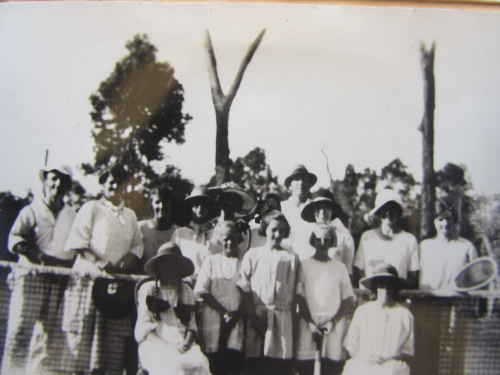
Over Forty-four Years
Mr. W. Toyer said his memory of the Hills went back 44 years. He wished to pay tribute to the late Mrs. Day, for when he came here, said Mr. Toyer, he had a young wife not in the best of health. He went to Mrs. Day and from that day to this he held her name in reverence for what she did for his wife and himself. Bridgetown never had a better ambassador than Mr. Hill and the bowling club and croquet club ‘were deeply indebted to them.
Mr. Arthur James, one of the oldest residents and a near neighbour of Sunnyhurst then presented Mrs-Hill, Mr. Hill, Mrs. C. Hurst and Mr, Hurst with mementos of the residents’ esteem and expressed their best wishes for their future happiness.
Responding, Mr. Hill recounted some of his experiences from the time he came to Bridgetown as a young man, started in business and then ultimately purchased Sunnyhurst.
Referring to the Granny Smith apple he said it was Mr. Despeissis of the Agricultural Department who advised him to try the Granny Smith.
“Still In Its Infancy”
In 1929 they boxed 1,800 cases for which they received 12/6 a case on Bridgetown station and 9/ a case for two inch Yates, so there was some prosperity in those days. The industry was still in its infancy but when export came again it should go ahead.
“We have lived to see the town grow,” said Mr. Hill, “have played our part in its development and it has also developed us., I have had my good times and my bad times but it was just a matter of sticking-to it.”
He referred to the fact that he had got “thrown off” the road board, because he did not want the town hall built where it is.

Mr. Hill said he deeply regretted leaving the district but hoped to make frequent visits to it in the future.
During the evening Mrs. Hill said she felt very much leaving Bridgetown and parting with so many of the friends she had made during her lifetime’s residence, but she would always remember them. Later in the evening, Mrs. Hill was obviously moved as the evening came to a close with the singing of Auld Lang Syne. They go to Pingelly taking with them the best wishes of a host of friends they had won during them 50 years in Bridgetown.
Dancing was interspersed with items by Mrs. T. Hurley (solo), Mr. L. Sussmell (saxophone), Miss Tess Webster (solo), Miss Mary Walker (solo and piano) with Mrs. Tomelty providing the main accompaniment. Mrs. Gray rendered a recitation, I “My Neighbours,” and the Kangaroo Gully Glee Singers provided some very entertaining items. They were so weirdly . and humorously dressed that it was impossible to tell the characters, who later were revealed to be “Pop” Henderson, Mrs. Gregor, Miss Mavis Johnston, Miss Jean Evans, Major Gordon Bennett, Mr. R. Johnson, Mr. L. Faulkiner and Mr. Graham Henderson. It was an entertaining burlesque thoroughly enjoyed by all.
Source:
1947 ‘Matta Mattup Residents’, The Blackwood Times (Bunbury, WA : 1905 – 1920; 1945 – 1954), 4 July, p. 8. , viewed 18 Jan 2017, http://nla.gov.au/nla.news-article211571790
Edward Ernest Hill (Ern)
Edward Ernest Hill (called Ern) was born in South Australia on Oct 25, 1878.
He was the youngest of Thomas and Charlotte Hill’s eight children and left home in Port Augusta at the age of sixteen. His father, Thomas Hill, migrated to South Australia from Ilminster in Somerset, England when he was 11 years old.
He ended up initially on the goldfields in Kalgoorlie where he was almost hung for stealing a horse. The stolen horse was tracked to his camp but he was able to convince them that he hadn’t stolen the horse.
Ern moved to the South West. The E. Day and Co firm was registered by Emma Jane Day and Ernest Hill in 1897. The earliest mention of the firm’s name in newspaper articles was in 1998. Emma transferred her share of the firm to Millicent Matilda Day in 1904.
Initially E. Day & Co leased some land in Bridgetown for 2 years near the Terminus Hotel on Steere Street where the first store was build.
The person who owned the land thought he would end up with the store when the lease ran out but Ern Hill had been clever. Ern built the store on logs, rather than on stumps — so when the lease expired he towed the store onto their own land in 1899 on the south west corner of Hampton Street (renamed South Western Hwy) and Henry Street.
A more substantial general store complex was built on their new land (Lot 19 Bridgetown Hampton Street and Henry Street) in 1902.
Their store was called E. Day & Co. Universal Providers and sold a wide range of merchandise. The store also sold medicines for a range of ailments including coughs and constipation.
E. Day & Co. Universal Providers was sold to Mr. H. Lake in August, 1907.
I’m assuming the family lived on the first floor of the building and sold the business when they moved into the Sunnyhurst Homestead. Bridgetown shop keepers originally decided their own trading hours and were often open until late in the evening. Closing shops at 7 PM was introduced in 1905. The first mention of the Sunnyhurst homestead address in news articles was in Dec, 1907.
The following photos of E. Day & Co were derived from screenshots when zoomed in on the original photo 008250PD: Bridgetown, 1923 (State Library of Western Australia). This photo was taken around 1923 when the store was no longer owned by E. Day & Co.
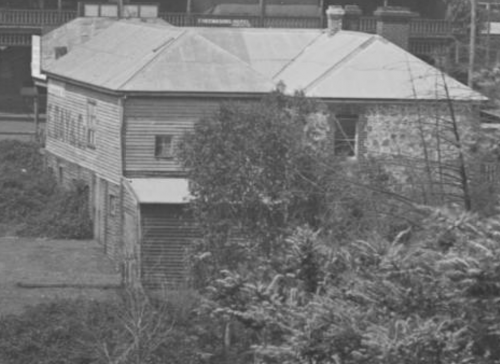

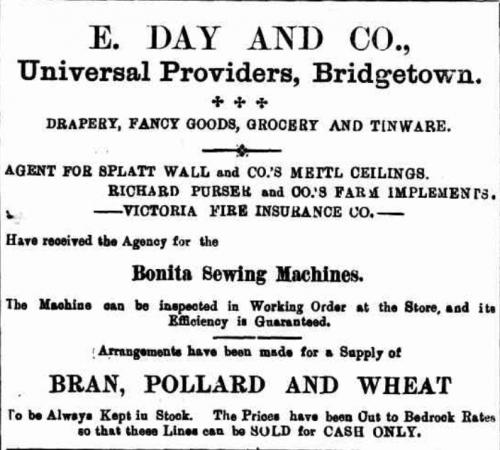
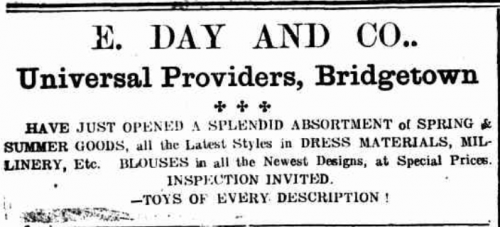
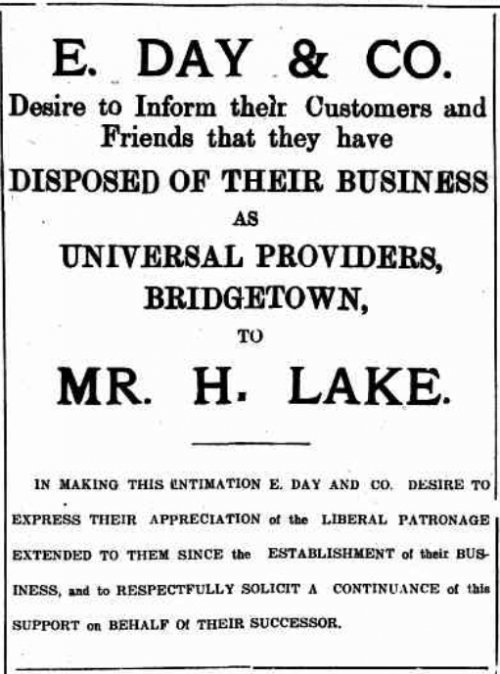
E.Day & Co. also owned Gambia Sawmills which they sold in June 1905 when they purchased the Sunnyhurst property to develop their orchards.
From what I can work out the family’s grand residence Sunnyhurst was built from late 1905 and they most likely moved into the property in 1907 when they sold their store. Sunnyhurst Homestead is located to the east of Bridgetown at 18 Doust Street. The homestead and store were constructed from stone by an Italian stonemason.
Ern was involved with numerous local organizations including:
- Bridgetown Local Board of Health – tended his resignation in Oct 1903 if the meetings of the board could not be held on Saturdays. Resignation accepted in Nov, 1903. Joined the Health Board again in 1908 and was a member of the board until 1912.
- Bridgetown Fruit Growers’ Association – Early mentions of involvement are articles from 1913 through to when he left Bridgetown in 1947. He was a life time member.
- Bridgetown Road Board – earliest mention in articles from 1918. Disagreed with the location of the proposed new town hall and was thrown off the board.
- Bridgetown Bowling club.
- Freemasons
Marriage
Ern Hill married Mollie Day on Dec 30, 1901 in a double wedding at St Paul’s Church, Bridgetown with Mollie’s older sister Daisy who married R.C Wild. Their sister Millicent Day was bridesmaid and John Day was the best man.
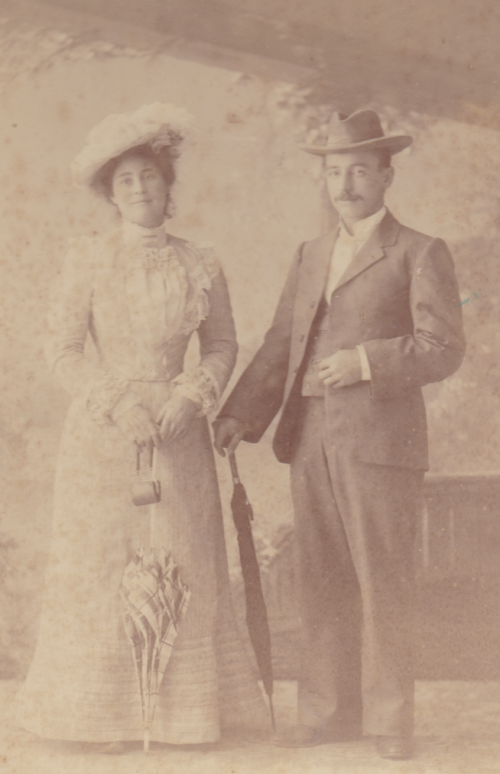
According to Fran Taylor’s Bridgetown the early years. Book two at times Ern used to stay in a boarding house in Bunbury run by Mollie’s mother (Emma Jane Day) and this is where he meet Mollie. I have’t been able to verify this information.
E. Day & Co was set up in 1897 when Ern was 19 and he didn’t marry Mollie until Dec 30, 1901 when he was 23.
Mollie’s maiden name was Mary Gertrude Day but she was called Mollie.
Ern Hill partnered with Emma Jane Day, mother-in-law; born in Meerut, Bengal, India, and Millicent Day, daughter of Emma Jane Day, to form E. Day & Co.
Ern and Mollie had three children:
- Clarice Emma b July 19, 1903 d 1973 m Nov 10, 1936 Charles Hurst b 1908 d
- Kenneth Roland b March 9, 1907 m April 29, 1933 Freda Charlott Byers
- Sylvia Millicent b Sept 16, 1908 d 22 Mar, 1990 m Feb 14, 1935 John Richard Collins b 1904 d 22 July, 1979

Clarice married Charles Hurst on Nov 10, 1936 and had two children:
- Millicent Mary (Jan) b 1938 m 1957 Willem Halma (Bill) b 1938 d 1984
- Helen b 1957
- Margaret 1962 m Bruce Dye divorced
- Julie
- Heidi Jane
- Lisa
- Susan b 1964 m 1989 David Waters March b 1963
- Sean Patrick b 1994
- Liam James b 1998
- Richard b June 1944 m Dorothy divorced m Ann
- Jason (step son)
- Amanda
- Matthew

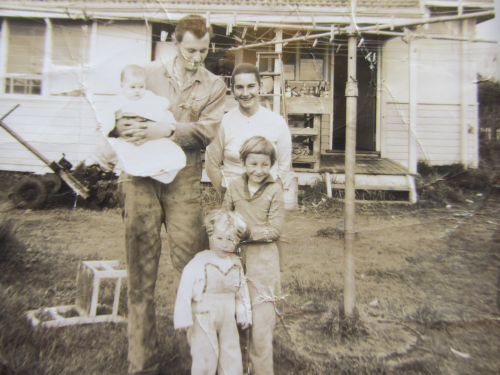
Charles Hurst met Clarice while working for E.Day & Co. Charles and Clarice lived in a cottage next to Sunnyhurst Homestead where the tennis courts were located until my mum was nine.

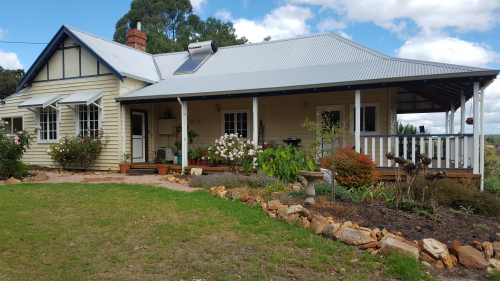
My mum Janne used to ride her horse to school in Kangaroo Gully from the Sunnyhurst homestead.
Kenneth Roland married Freda Charlott Byers on April 29, 1933 and had two children.
- Graham Kenneth b May 16, 1936
- Geoffrey
Sylvia married John Richard Collins on Feb 14, 1935 and had no children.
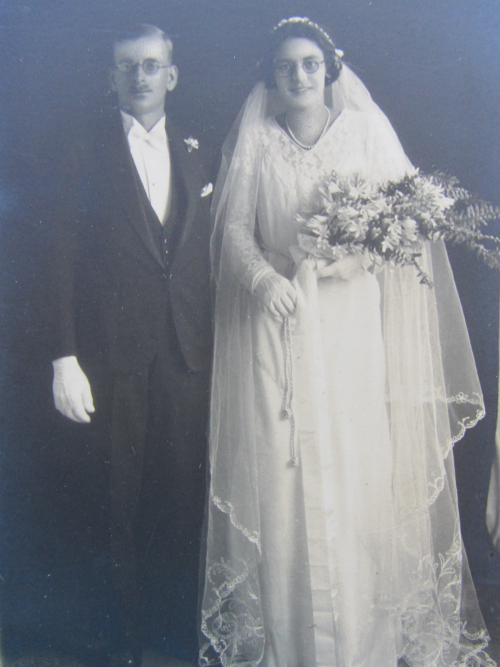
All Ern and Mollie’s children were given a farm in Bridgetown when they married except for Clarice because she lived on a cottage on the main farm at Sunnyhurst.
Sunnyhurst Homestead
Sunnyhurst was the family home built by Ern Hill. One suggestion was to call it Sunnyhill but Ern did not like this name because he was worried if he had a son that he might be teased. They wanted to include the name Sunny and Hurst is an ancient English meaning for wooded hill.

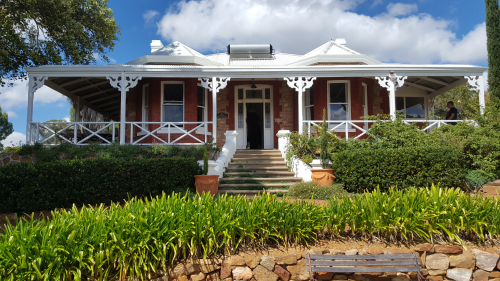
There used to be a picket fence at the front of the Sunnyhurst homestead but it was long gone when my mother was a child. Sunnyhurst had a substantial and impressive garden around the front of the house.
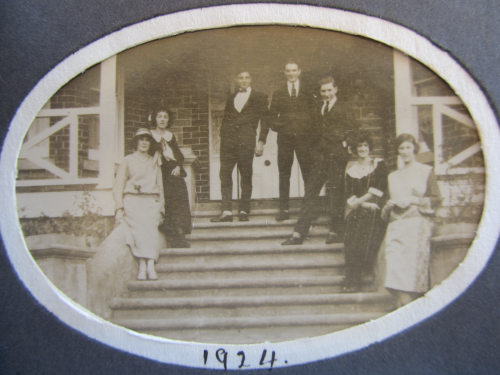
The back of the house faced the road and most people came in through the back entrance. This may be due to the fact that the road was a problem due to Morton Bay figs that had grown very large when she was a child.
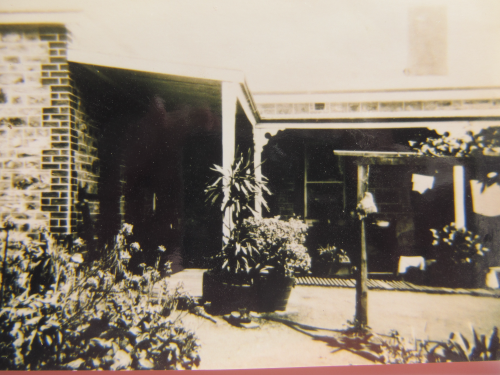
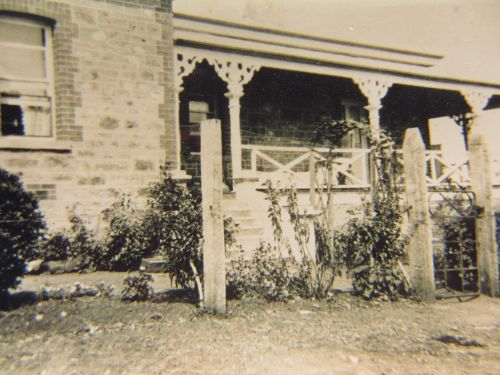
The back entry led into the dining room which my mother Janne remembers as being very large with a table, fireplace and some lounge chairs where her grandfather Ern used to listen to the war news on the radio.
The main bedroom was originally occupied by her Grandmother Day (Emma Jane Day).
There was a study on the side of the house filled with National Geographic’s and a billiard room. It also had a room that Ern Hill used as his study.
There was a central passage from the back dining room to the front. On the kitchen side of the house there was a sleepout running the length of the house from the dining room to the front.

It was a house that held bridge parties and tennis parties. Ern and Mollie Hill were considered a person of importance in Bridgetown when my mother was growing up.
The Sunnyhurst farm extended down to Ern’s brother Walter’s property near the river and was divided by a road near East Moore. It included a packing shed and orchard separated by the road.

The family was regularly mentioned in the newspaper. My mother remembers the family being mentioned in the local paper when she went to Perth with Ern Hill to visit her grandmother Mrs Hill who was in hospital in Perth. She remembers seeing Catalina landing on the Swan and trying to explore the trenches in the park near Hospital.
Ern’s sister Ada Hill married E.L Mitchell (Teddy) and farmed an orchard in Bridgetown.
Around the farm
Mr. E. E. Hill, of Bridgetown, received about a week ago an unwelcome reminder that gelignite is not quite so simple and harmless a compound as some would have us believe.
He was lighting a fuse to a charge which had been duly prepared when it failed to ignite and in order to secure success he caught hold of the fuse to steady it with his hand while he applied the match. As he did so, the charge went off.
At the time Mr. Hill congratulated himself that he had had a remarkable escape from injury, but since then he has found out to his cost that he was not so fortunate as was at first supposed and on Tuesday left for Perth for treatment* to his nose , and ayes which had been injured. If warning is necessary, this should tend to make people locally careful in the handling of high explosives.
Source:
- 1911 ‘Personal.’, Southern Times (Bunbury, WA : 1888 – 1916), 25 March, p. 3. , viewed 22 Jan 2017, http://nla.gov.au/nla.news-article158888554
Sunnyhurst Corridales (Flock No. 225)
A Successful Bridgetown Stud.
The well known and successful Corriedale stud “Sunnyhurst,” owned by E. Day and Co., is situated just outside Bridgetown, in the 30-inch rainfall area..
The property comprises three separate smaller farms-the homestead property, consisting of 80 acres, including 27 acres of orchard, is subdivided into small paddocks of from one to seven acres; a second farm of the same acreage about two miles from the homestead and 900 acres of bush country which is not yet carrying stock and which is five miles from the home farm.
Both the developed farms are under pasture, mainly sub clover, rye-grasses, genarium, barley grass, Phalaris tuberosa and three small paddocks are under lucerne which does very well in this area and provides a valuable feed for the stud.
The Stud.
The flock was established in 1929 by the purchase of 30 stud ewes from registered flock of Mr. P. N. Collins, Pewsey Vale, Lyndock, S.A. (Flock No. 169) and in the following year a further 34 ewes were purchased from the same source.
Mr. Collins’s flock was founded mainly on that of Mr. T. C. Eilis, Mt. Gambier, S.A., which was formed in 1898 by the mating of inbred Lincoln-Merino rams with ewes of the same breeding. A strain of both Guthrie and Moody bloods was also introduced by Mr. Ellis so that Sunnyhurst blood is in direct line from the foundations of the present Corriedale as now known.
Rams introduced since the foundation of the stud are:-In 1930 one ram from Mr. J. J. Sullivan (Flock No. 100). which was never used, and one ram from Mr Leslie Craig’s Princep Park stud; in 1931 stud rams were purchased from Mr. W. J. Pederick, Corrylyn, Wagin (a good ram which was used extensively) ; Messrs. J. A. Sloane and Co., Ltd., Wulwala, N.S.W., and Mr. Craig again. These two were used only as flock rams. In 1932 another ram came from Messrs. Sloane and Co. and then no further purchases occurred until 1937 when the ram Dallveen No, J.60 was procured from Mr. S. C. Dall’s stud at Quairading, and in December of that year a ram bred by Senator Guthrie was purchased with 65 ewes from the estate of the late W. W. Hedges, Hamel, W.A. These last two rams were not retained in the stud.

Of these last 65 ewes purchased, 33 were sold to Mr. K. R. Hill, of Bridge-town to found his stud, some to Mr. Barton Langridge of Donnybrook and the balance after, careful culling were passed into the Sunnyhurst flock.
In spite of the number of rams purchased, the general policy has been to adherent the use of rams bred in the stud wherever this was possible and except where they find an out-cross absolutely necessary Messrs. Day and Co. intend to maintain this policy.
Every year they dispose of many ewes, with the intention of maintaining a high equality stud of small numbers and the success of this policy ls proved by the fact that since 1932 when they commenced exhibiting sheep they have acquired.
One championship and two reserve championships for rams, one reserve championship with a ewe, seven first awards, ? nine second awards, five third awards : and have been twice highly commended.
The sheep in the stud are all of excellent conformation, with good heads and deep, -well sprung bodies. The backs are all of good length and breadth, and they carry good even fleeces of 50’s-60’s quality wool. The ewes cut as high as 141b. of wool and one ram in particular (CA), a 1936 drop ram by Pride of Sunnyhurst A.22 (Perth champion in 1934), was sold to Mr. B. L. Spedding Smith, of Coolgardie and, according to a letter received by Messrs. Day and Co. from the purchaser, cut 211b. of wool.
Source:
- 1940 ‘AROUND THE STUDS’, Western Mail (Perth, WA : 1885 – 1954), 4 July, p. 32. , viewed 26 Jan 2017, http://nla.gov.au/nla.news-article38414784
Sale of E. Day & Co
In 1947 Ern Hill had a health issue so he sold up and distributed the shares of the partnership within the family. Ern and Mollie Hill initially lived in Pingelly with Charles and Clarice before moving into their house in Wembley, Perth.
Charles and Clarice Hurst moved to Pingelly and then in 1950’s Popanyinning.
In 1962, Charles and Clarice Hurst returned to Bridgetown buying a farm on Tweed Road. Clarice Hurst died from multiple sclerosis in Manjimup Hospital in 1973. Charles Hurst was well known in Bridgetown and left the area in 1980.
Thomas and Charlotte Hill
Ern Hill was the the youngest of Thomas and Charlotte Hill’s eight children and left home in Port Augusta at the age of sixteen.
Thomas Hill was born in Ilminster, Somerset England on 29 April, 1841 and came to Australia with his family arriving at Port Adelaide on the wooden sailing ship “Taymouth Castle” in 1854 when he was 13. The ship left Plymouth on Feb 7, 1854 and arrived in Port Adelaide on May 3, 1854; taking 86 days (passenger list).
Excerpt from Immigration Agent’s Report:
Immigration Office, Port Adelaide, July 12, 1854. Sir — I have the honour to transmit, for the information of his Excellency the Lieutenant Governor, the report of the immigration Department, for the quarter ended June 30, 1854. During that period of time, seven ships, chartered by the Land and Emigration Commissioners, have arrived, bringing to the colony an aggregate number of one thousand nine hundred and ninety-nine souls.
The Taymouch Castle arrived from Ply mouth on the 3rd of May, after a passage of eighty-six day, with 295 emigrants ; eleven births and two deaths occurred at sea. The ship was in very good order. The arrangement of the berths in this vessel was on a different system from any hitherto employed. They were grouped together in blocks on the telescope principle, so that when not in use they might be reduced to half their size; and the tables were constructed in such a manner as to be allowed to occupy the vacant space during the day. I am not disposed to look on this system as being a desirable mode of berthing immigrant ships. When it becomes necessary to allow one emigrant to remain in bed during the day, the table in that group of berths cannot be used, and about eleven persons are put to great inconvenience tor the sake of one. Where no great amount of sickness prevails, such a system might not seriously interfere with the general comfort of the ship, as arrangements might be made to meet individual cases of temporary sickness ; but were any general epidemic to prevail, the inconvenience produced by the want of the tables would be excessive. The inner half of the bottom boards of the berths, constructed in the manner described, were fixtures ; this is decidedly objectionable, as it interferes with the proper cleaning of the ship. The surgeon superintendent recommend that the different beds should be numbered, as great disturbance was caused amongst the young women every time the beds were taken on deck by their disputes about ownership. In this ship there was put on board by the Commissioners an oven capable of baking about l60 lbs. of bread at a time, in order to afford the emigrants, especially the women and children, an occasional supply of soft bread; the supply of flour to the emigrants was, by this means, issued to them four times in the week, in the shape of soft bread. This is a great improvement, and, I think, if adopted on all ships, would not only add greatly to the comfort but also to the health of the people, if precautions were taken that means are used for properly leavening the bread, so as to make it light and digestible.
I have already referred to a new mode of constructing the berths in the Taymouth Castle; another system has been adopted in some ships, which I think a very great improvement; the berths in the cases to which I allude are built amidships. By this system the light and ventilation of the decks are greatly improved ; the port-holes can be kept open much longer than when the berths were constructed at the sides of the ship, and there is much less obstruction to light. There is one objection to the system, viz , that the vacant space below- for the use of the emigrants is divided into too small spaces and is less convenient, but I think this objection is trivial when contrasted with the advantages which are obtained. It is also stated, that when in the single women’s apartments the berths are placed amidships, that there is in creased difficulty in keeping them under proper surveillance. This objection is partially obviated by a small space being left so as to permit a passage between the double row of berths ; but this can be done only in ships of large size. More than one improvement has been attempted by the Commissioners in the construction of the water-closets, but these attempts have not thoroughly succeeded. It appears very improbable that any system can be adopted which will be found to succeed in all cases. The habits of the people, their previous ignorance of such conveniences, and the malicious pleasure which some of them seem to take in destroying that which is intended for their own comfort, renders it a matter nearly hopeless to expect that any system or improve ment will at all times succeed in accomplish ing the object intended. The Commissioners have lately authorized an additional number of constables to each ship, in the proportion of one constable to each three messes of single girls, for the special purpose of receiving the provisions of the single women’s messes and conveying them to and from the galleys. The object of this measure is to withdraw, as fa practicable, all opportunities for communication between the single women and that part of the vessel particularly set apart for the use of the crew, and to deprive the former of the excuse of which they frequently avail themselves, that they are in the fore part of the vessel for some purpose connected with the cooking of their provisions. This is, in deed, a valuable improvement, and has been found mosf beneficial ; and I cannot avoid this opportunity of giving my very humble testimony of the untiring zeal of the Commissioners in adopting all reasonable plans of improvement in the management of emigrant ships, which are from time to time suggested.
The Taymouth Castle, the Time and Truth, and the Fortune, which have arrived during the quarter, have not brought with them official papers detailing the counties from which the emigrants have been selected, or the occupations to which they have been accustomed, the official lists being nominal lists only. The want of these documents interferes in some respects with making up correct quarterly reports, as well as the different statistical annual returns. The proportion of the immigrants from the three kingdoms, so far as we have data to go upon, is as follows: — From England, 979; from Scotland, 308; from Ireland, 473. Emigrants regarding whom there is no return, 239; total, 1,999. I have, &c, H. Duncan, M.D., Immigration Agent. The Hon. the Colonial Secretary.
Source:
- Immigration report from 1854 ‘The Register. ADELAIDE: TUESDAY, JULY 25, 1854.’, South Australian Register (Adelaide, SA : 1839 – 1900), 25 July, p. 2. , viewed 28 Mar 2017, http://nla.gov.au/nla.news-article49198167
- Other information from 1908 ‘Obituary.’, The Blackwood Times (Bunbury, WA : 1905 – 1920; 1945 – 1954), 25 August, p. 4. , viewed 27 Mar 2017, http://nla.gov.au/nla.news-article210263589
His father, James Hill was born in 1806 in North Petherton Somerset England married Sarah Stratton and had five children:
- Mary Ann b 1836
- James b 1836
- Lucy b 1839
- Thomas b 1841 d 1908
- William b 1849
The family initially lived in Coromontal Valley on the Sturt in South Australia for about 3 years before moving further north.
Thomas’s first job was working for J.H Angus for a few years after which he did pastoral work until 1876.
Thomas married Charlotte Graham, who was born in 1846, on 26 Jan, 1863 when he was 22 and she was 17. Charlotte was the eldest daughter of Walter Graham, a dairyman of Stoney Creek, South Australia.
Thomas and Charlotte had eight children:
- Charlotte b 1864 d 1930 m Edward Simpson Hill b 1860 d 1930
- James b 1866 m Annie E Cooper
- Walter Henry b 1870 d 1948 m 1896 Sarah Gertrude Andrews b 1877 d 1943 (see their children listed below)
- Sarah b 1873 m George W Breemier
- Mary Ann b 1 Jun, 1863 d 28 Aug, 1946 m 1907 George Howard Strieby b 1865 d 1936
- Ernest Edward 25 Oct, 1878 d 7 Feb, 1951 m 1901 Mary Gertrude Day
- Andrew Albert b 28 May 1883 d September 1883
- Ada Johnson b 8 June, 1886 d m Edwin Lewis Mitchell b 1878 d 1970
All their children were born in South Australia.
Thomas Hill joined the Corporation of Port Augusta on Dec 9, 1876 and worked as a sanitary inspector for 27 years until Feb 28, 1904.
Thomas was involved in the following organizations during his time living in Port Augusta:
- Port Augusta Fire Brigade – foreman
- Manchester Unity Ancient Order of Oldfellows – became a member at the age of 18.
- Several prominent positions in the Anglican Church of Port Augusta
Thomas and Charlotte Hill moved to Bridgetown, Western Australia in March 1904 on the S.S. Grantala. The rest of the family including Thomas and Charlotte moved to Western Australia. As far as I can work out Charlotte and James remained in South Australia and the rest of their family moved to Bridgetown. I’m not sure if Walter Henry Hill moved to Bridgetown with them in 1904 or he may have come in 1905.
Based on S.S Grantala passenger lists it looks like Ern Hill and Millicent Day may have traveled to South Australia in 1904 to help the family move to Western Australia.
Ern Hill lived in Bridgetown from 1897 until 1947.
Edward Ernest Hill, Mary Ann Hill and Ada Hill all married at St Paul’s Church, Bridgetown. Sarah Hill married George William Beermier in 1905 in Subiaco, Western Australia.
Mary Ann and George Strieby moved to Yundamindera in the Goldfields after their marriage. While Edward Ernest, Walter Henry and Ada lived in Bridgetown.
Thomas died on August 15, 1908 in Bridgetown when he was 67.
Thomas Hill was buried in the old Bridgetown Pioneer Cemetery which opened in 1878. The last burial in this cemetery was on March 23, 1926. The cemetery was converted to a scenic parkland, Pioneer Parkland, in 1988 as part of the bicentennial celebrations. Old headstones were recovered and placed at either side of the entrance to the park.
Charlotte died on Sept 24, 1931 in Perth aged 86 and was buried in the new Bridgetown cemetery.
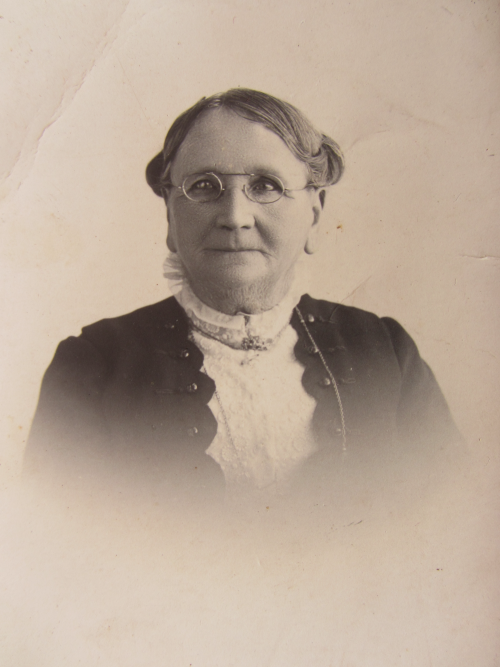
Walter Henry Hill
Walter Hill (Wally), the brother of Ern, moved to Bridgetown in 1905 and helped with the business. Wally originally worked in Kalgoorlie with Ern.
Walter Henry Hill was born 4 March, 1870 in South Australia and married Sarah Gertrude Andrews (b 1877 d 1943) in Adelaide, South Australia, on 27 April 1896 when he was 26 years old.
Walter and Sarah had five children:
- Bertram Thomas b 1896 d Nov 21, 1916 (killed in action in France, World War I)
- Clem Hill b 28 Feb 1898 d 19 July, 1935 m 1927 Dorothy Martha Dye b 1890 d 1974 Clem had two children: Kevin Sydney Hill b 19 Mar, 1929 and John Walter William Hill b 1 April 1932
- Beryl Gertude b 19 Apr, 1900 – Bethesda Hospital in Perth was established by Matron Beryl Hill in 1943.
- Gwenever May Augusta b 17 Aug, 1902 d 1976 m William George Albert Jones – died in Augusta WA.
- Marjorie Ada b 1906 d 1966 m E.Brown
Beryl, Gwen and Marjorie lived in Western Australia. Clem Hill lived in NSW.
The Late Walter , Henry Hill
The death of Mr. Walter Henry Hill marks the passing of yet another old and very respected resident of the Bridgetown district.
He was born in Melrose, S.A., in 1870 and came to W.A. in 1905 with his wife and family and made his home in Bridgetown where he developed the well-known Dorrington property in the Mattup area, on which, until a few years ago he and his family resided.
Originally Dorrington was virgin bush but Mr. Hill developed it to a very high standard. He was very interested in the activities of the Bridgetown Fruitgrowers Association and was noted for the high quality fruit that he produced in his orchard. He was of a particularly quiet nature and it was only natural that a gentleman of his type has left behind a wide host of friends to mourn his passing.
It is also recalled that for very many years his wife was president of the Bridgetown Red Cross.
His death took place at his daughter’s hospital, Bethesda, in Claremont, for during the last three years he has been living at Mount Lawley. He was a very keen orchardist, always helping others and many outstanding, orchards today owe their position to the work of Mr. Hill in reconstructing them and directing their growth for he was an expert pruner.
He leaves behind to mourn his passing his wife, and three daughters, Beryl (matron of Bethesda Hospital), Gwen (Mrs. W. G. Jones), Marjorie (Mrs. E. Brown), to whom the sympathy of the whole district is extended in their irreparable loss.
Source:
- 1948 ‘The Late Walter Henry Hill’, The Blackwood Times (Bunbury, WA : 1905 – 1920; 1945 – 1954), 15 October, p. 6. , viewed 22 Jan 2017, http://nla.gov.au/nla.news-article210699256
Bertram Thomas Hill
Bertram Thomas Hill, Walter Hill’s son, was killed in action in 1916.
The many friends of Mr. and Mrs. W. Hill, of Bridgetown, expressed their deepest sympathy with the bereaved family when the news of their son’s death was cabled through.
Bertram Thomas Hill had just’ passed his 20th year and had a decided a liking for military life. He joined the cadets at Bridgetown and quickly worked up to Sergeant. He enlisted in the A.I.F. on 3rd January this year, and soon worked up to corporal, his youth preventing him getting Sergeant’s rank.
Deceased sailed for Egypt on 31st March, and reached France some time in June. He was then attached to 16th Reinforcement 16th Battalion, but in France was transferred to “D” Company 4Sth Battalion 12th Brigade, and having been passed through the school, held the position of Gunner.
He gave his life for his country on 23rd November, being killed in action.
Source:
- 1916 ‘Personal’, The Blackwood Times (Bunbury, WA : 1905 – 1920; 1945 – 1954), 22 December, p. 2. , viewed 22 Jan 2017, http://nla.gov.au/nla.news-article210278742
In Memoriam
In sad and loving memory of our dear son and brother, Bert. late 48’1 Brigade killed in action at Flees on November 21, 1916. Although two years have passed away, Our grief is just as deep. Inserted by his loving father, mother, sisters, and brother, Bridgetown.
In sad but proud remembrance of Gunner Bertram Thomas Hill, killed in action somewhere in France November 23,’ 1916. Your death was not in rain, Bert. Inserted by his loving uncle and aunt. E. and M. HiII, and cousins, Clarice. Kenneth, and Sylvia, Sunnyhurst, Bridgetown.
In loving memory of Bert, killed In action November 23, 1916 Inserted by his loving aunts and uncles. Mr. and Mrs. O. T. Andrews, Mr. and Mrs. A. E. Wood.
Source:
- 1918 ‘Family Notices’, The West Australian (Perth, WA : 1879 – 1954), 23 November, p. 1. , viewed 22 Jan 2017, http://nla.gov.au/nla.news-article27496780
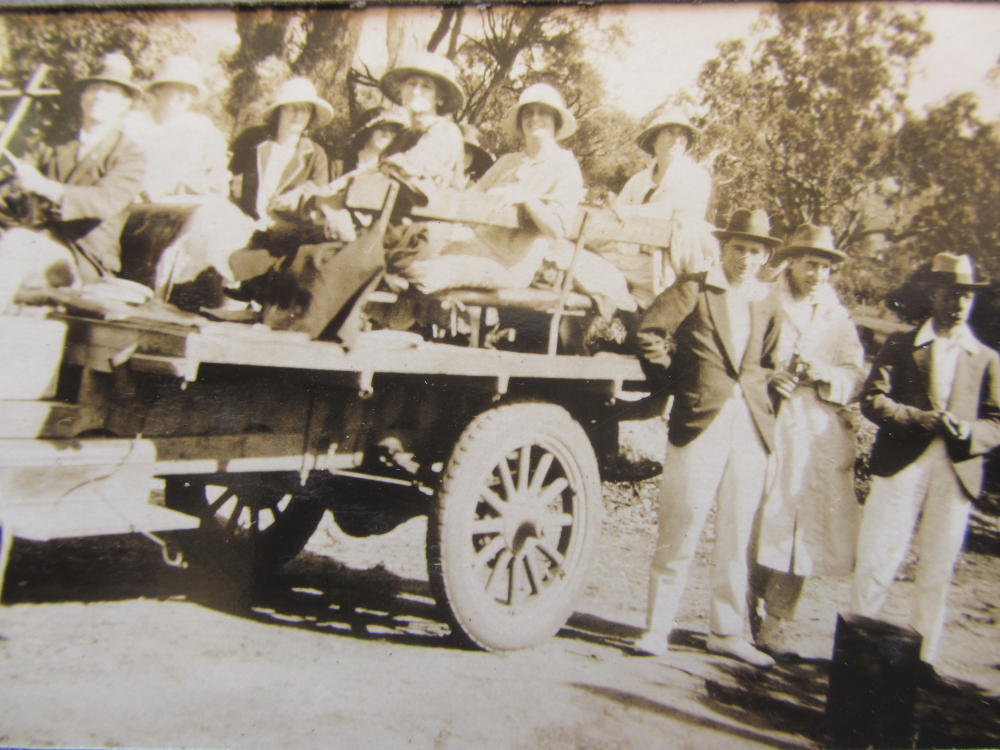


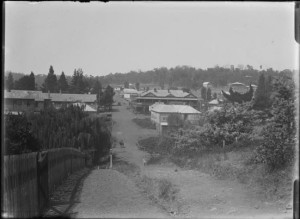
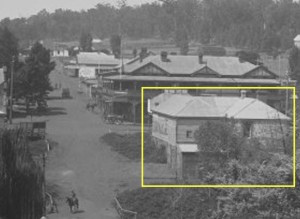

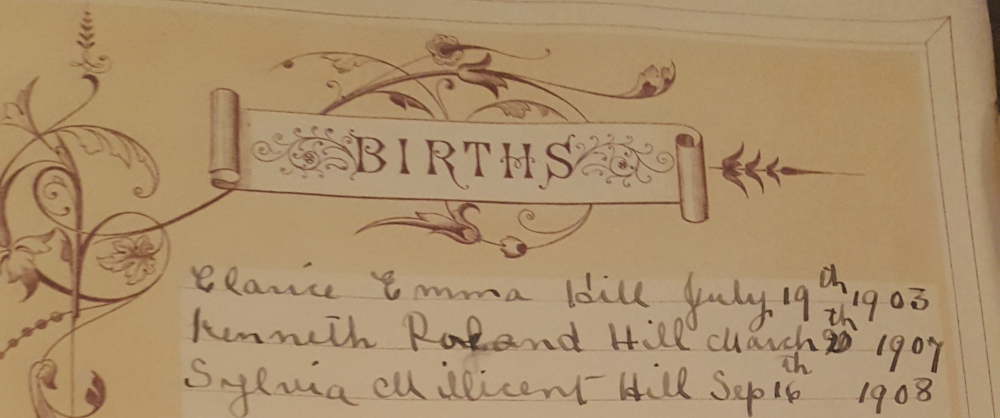

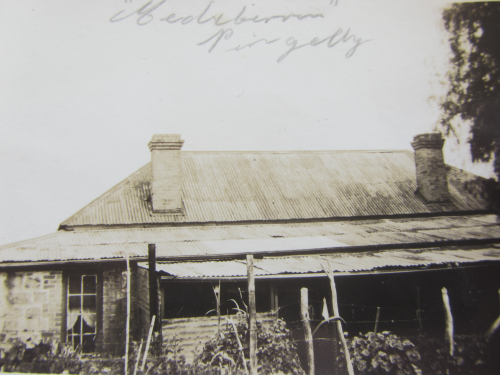

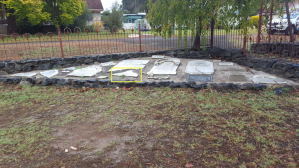

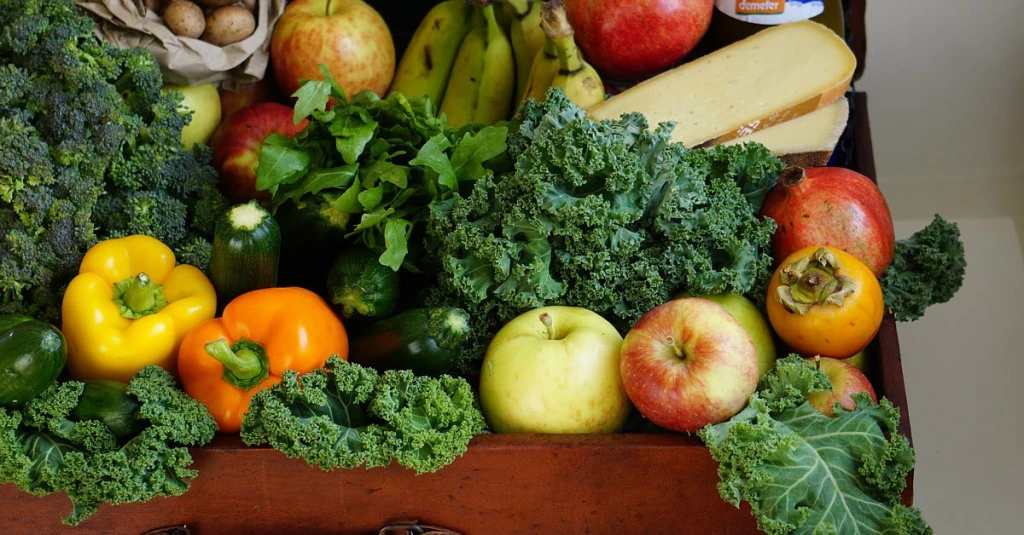


Leave a comment